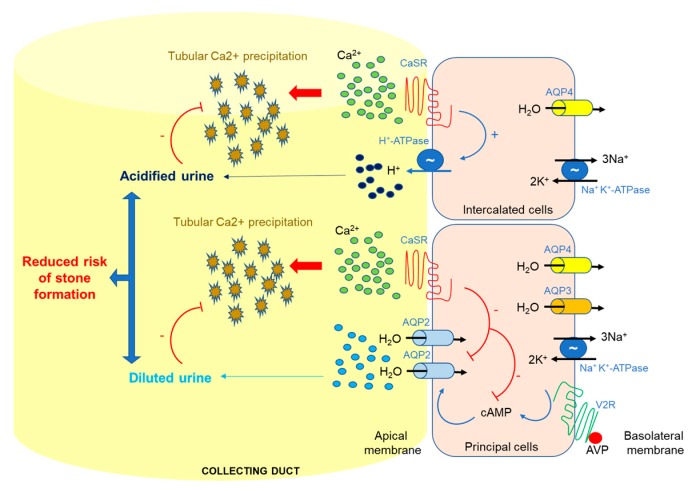Figure 2.
Localization and function of CaSR in the collecting duct. In the presence of an antidiuretic stimulus, Ca2+ concentrations in the pre-urine can become super-saturating, potentially leading to Ca2+ stone formation. When the luminal Ca2+ concentration becomes critically high it activates the apical CaSR which, in principal cells, blunts vasopressin-mediated apical insertion of the aquaporin-2 (AQP2) water channel and the rate of water reabsorption. In intercalated cells, CaSR activation leads to luminal acidification. Overall, these two effects result in the production of a dilute, acidified urine, which reduces the risk of nephrolithiasis.

